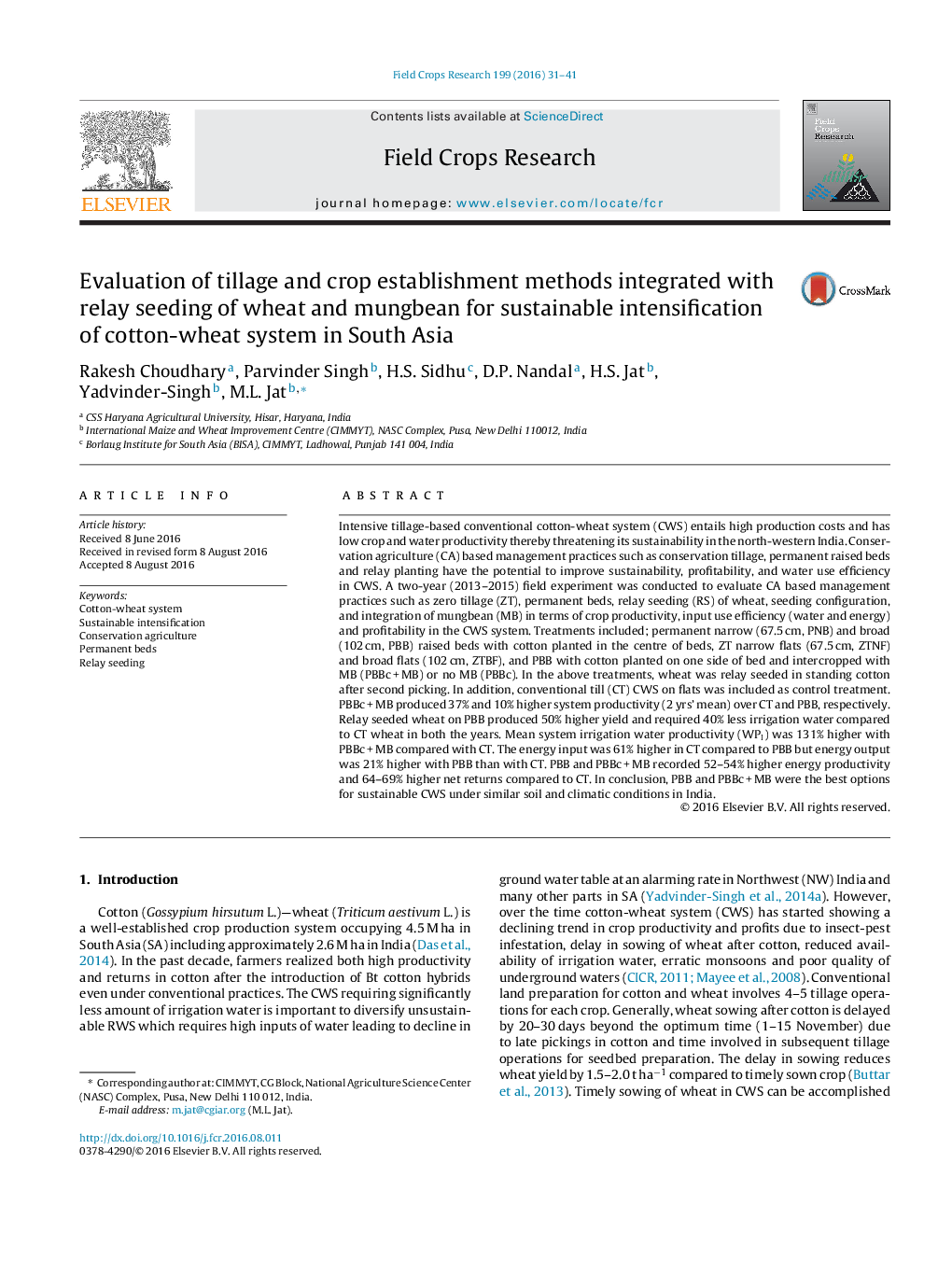| Article ID | Journal | Published Year | Pages | File Type |
|---|---|---|---|---|
| 6374422 | Field Crops Research | 2016 | 11 Pages |
Abstract
Intensive tillage-based conventional cotton-wheat system (CWS) entails high production costs and has low crop and water productivity thereby threatening its sustainability in the north-western India. Conservation agriculture (CA) based management practices such as conservation tillage, permanent raised beds and relay planting have the potential to improve sustainability, profitability, and water use efficiency in CWS. A two-year (2013-2015) field experiment was conducted to evaluate CA based management practices such as zero tillage (ZT), permanent beds, relay seeding (RS) of wheat, seeding configuration, and integration of mungbean (MB) in terms of crop productivity, input use efficiency (water and energy) and profitability in the CWS system. Treatments included; permanent narrow (67.5 cm, PNB) and broad (102 cm, PBB) raised beds with cotton planted in the centre of beds, ZT narrow flats (67.5 cm, ZTNF) and broad flats (102 cm, ZTBF), and PBB with cotton planted on one side of bed and intercropped with MB (PBBc + MB) or no MB (PBBc). In the above treatments, wheat was relay seeded in standing cotton after second picking. In addition, conventional till (CT) CWS on flats was included as control treatment. PBBc + MB produced 37% and 10% higher system productivity (2 yrs' mean) over CT and PBB, respectively. Relay seeded wheat on PBB produced 50% higher yield and required 40% less irrigation water compared to CT wheat in both the years. Mean system irrigation water productivity (WPI) was 131% higher with PBBc + MB compared with CT. The energy input was 61% higher in CT compared to PBB but energy output was 21% higher with PBB than with CT. PBB and PBBc + MB recorded 52-54% higher energy productivity and 64-69% higher net returns compared to CT. In conclusion, PBB and PBBc + MB were the best options for sustainable CWS under similar soil and climatic conditions in India.
Related Topics
Life Sciences
Agricultural and Biological Sciences
Agronomy and Crop Science
Authors
Rakesh Choudhary, Parvinder Singh, H.S. Sidhu, D.P. Nandal, H.S. Jat, Yadvinder-Singh Yadvinder-Singh, M.L. Jat,
